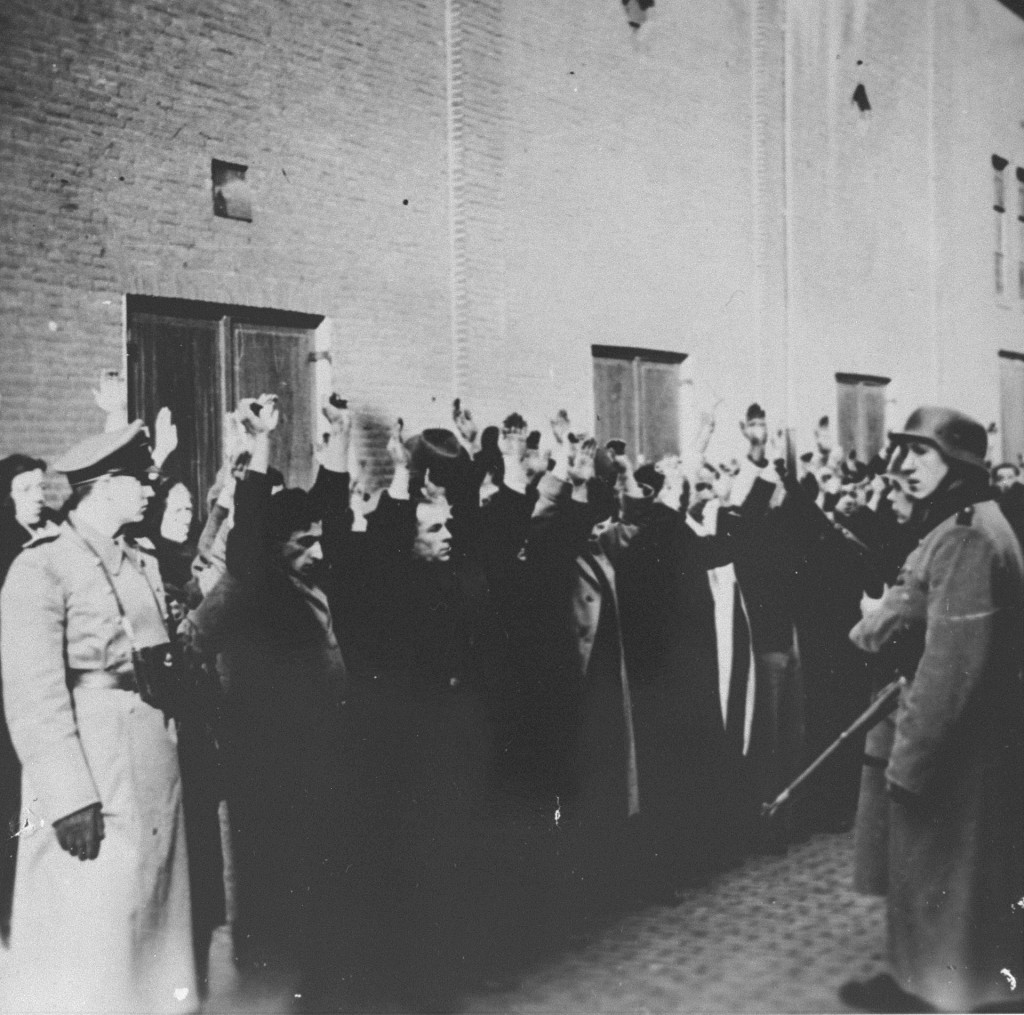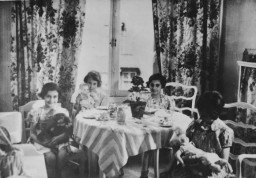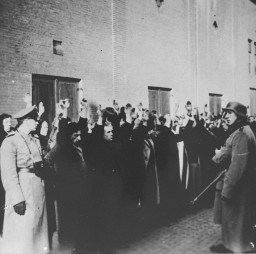
The Netherlands

After the German invasion of the Netherlands in May 1940, a civil administration was installed under SS auspices. Arthur Seyss-Inquart was appointed Reich Commissar. He presided over a German administration that included many Austrian-born Nazis. They in turn supervised the Dutch civil service. This arrangement was to prove fateful for the Jews of the Netherlands.
During 1940, the German occupation authorities banned Jews from the civil service and required Jews to register the assets of their business enterprises. In January 1941, the German authorities required all Jews to register themselves as Jews. A total of 159,806 persons registered, including 19,561 persons born of mixed marriages. The total included some 25,000 Jewish refugees from the German Reich. A Jewish council was established in February 1941.
The arrests of several hundred young Jews (sent to the Buchenwald and Mauthausen concentration camps) led to a general strike by Dutch workers on February 25, 1941. German officials brutally suppressed the strike. This action was followed by a hardening in Nazi policy. The German authorities and their Dutch collaborators segregated Jews from the general Dutch population, and incarcerated 15,000 Jews in German-administered forced-labor camps. The Germans then ordered the concentration of Jews in Amsterdam and sent foreign and stateless Jews to the Westerbork transit camp in the northeast part of the country. Some of the remaining provincial Jews were sent to the Vught camp. As of April 29, 1942, Jews were required to wear a yellow Star of David on their clothing.
Deportations of Jews from the Netherlands began in the summer of 1942. The last train left Westerbork for Auschwitz on September 3, 1944. During these two years, the Germans and their Dutch collaborators deported some 107,000 Jews, mostly to Auschwitz and Sobibor, where they were murdered. Only 5,200 survived. In addition, 25,000-30,000 Jews went into hiding, assisted by the Dutch underground. Two-thirds of those Dutch Jews who went into hiding managed to survive.

The geography of the Netherlands made escape difficult. The ruthless efficiency of the German administration and the willing cooperation of Dutch administrators and policemen doomed the Jews of the Netherlands. Less than 25 percent of Dutch Jewry survived the Holocaust.
Series: Anne Frank
Critical Thinking Questions
- What pressures and motivations might lead individuals and institutions to collaborate with an occupying regime?
- What pressures and motivations may have influenced the decisions of rescuers in the Netherlands? Are these factors unique to this history or universal?
- Learn about the lives of the Jews in the Netherlands before the German invasion.
- Learn more about the fate of Jews in the Netherlands.








